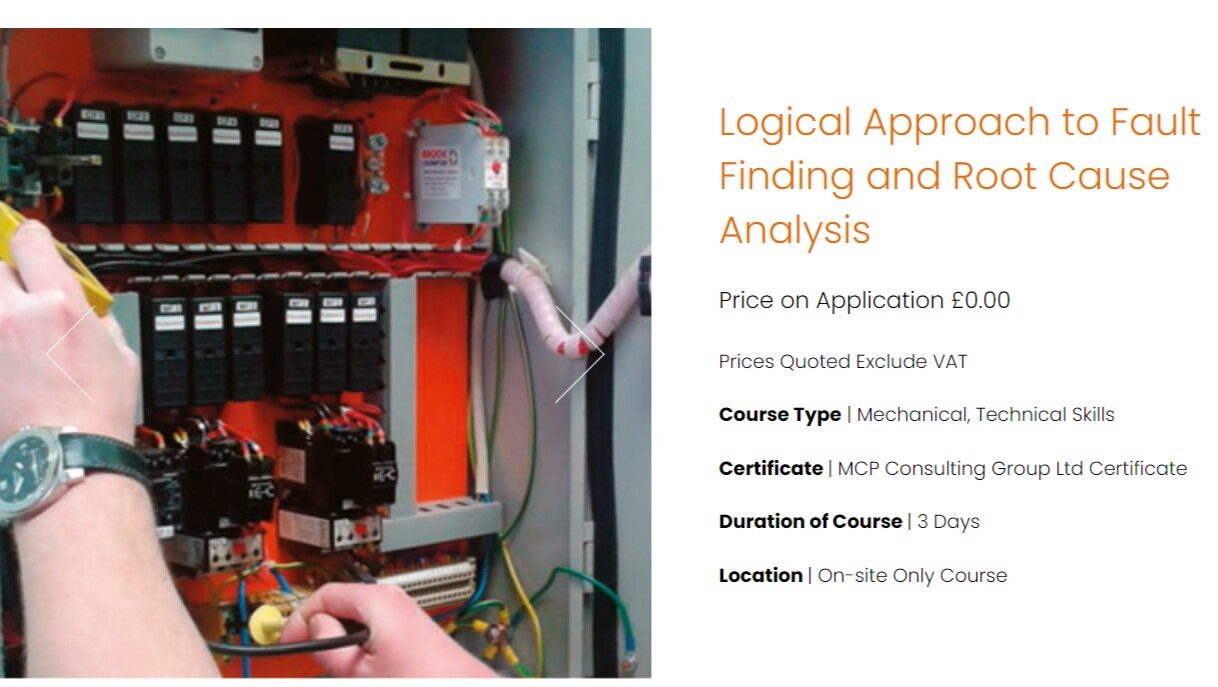10 Tips to Improve Plant Performance
Top 10 Tips for Maintenance Technicians to Improve Plant Performance
In these challenging times, businesses need to improve plant performance. But how can you and your maintenance teams help?
Organisations should spend c80% of their resources on business-critical assets. But what are the business critical assets in your workplace? If you are going to apply any maintenance improvement techniques or analysis, you need to focus on the critical assets.
To give you a head start, we have prepared the Top 10 Tips to help Maintenance Technicians improve your plant performance:
1. Use Root Cause Analysis (RCA) to identify and eliminate causes
The best way to deal with a recurring fault or major incident is to do a multi-disciplined RCA to enable your business to identify a cost-effective, long-term fix. It is important to remember that there may be multiple causes. Have you got a WhatsApp group for your techs? Have you consulted with the right people? The operators are with the machine all day every day.
2. Develop your maintenance plans
Develop your maintenance plans using plant criticality and Reliability Centered Maintenance (RCM), Failure Mode Effect and Criticality Analysis (FMECA) or by Reviewing Existing Maintenance (REM).
A large utility company we worked with used to spend 80% of their maintenance budget on non-critical assets. Following a criticality study, they now spend 80% of their maintenance budget on just critical assets. It’s about developing cost effective maintenance plans for your business. Just because RCM is the right tool for keeping aeroplanes in the sky, it does not mean that it is appropriate for your packaging line. Maybe REM is the correct approach?
N.B. Fixed Time Maintenance (FTM) is expensive and impacts asset availability. We should focus on Condition Based Maintenance (CBM).
3. Create a Design Out Maintenance (DOM) culture within the team
A good technician is not the technician who gets the equipment back into service in record time. He/she is the one who stops it from failing in the first place! Following on from an RCA or RCM study it might be appropriate to examine measures needed to avoid or minimise maintenance in the first place. DOM aims to improve:
Equipment availability
Production capacity
Safety
We understand that Zero Failure is too expensive and unrealistic, it is better to employ an Operate to Failure strategy for low criticality assets.
4. Use data to make your case for improvement
It is no longer enough to stamp your feet and state that this component is no longer fit for purpose (or more industrial language!). You need to prove it with data. How long has it been out of service? How much production does this equate to? How much does this cost?
5. Document maintenance history
To help you to build your data to support your improvement plans, being able to quantify the significant costs like spare parts and labour is essential. A computerised maintenance management system also holds your asset register and maintenance plans. For each job, as a minimum, you need to input: asset identification and location; potential cause(s) of failure; work order duration; spare parts used etc.
6. Do the job to the right standard
An engineer famously quipped, “If it looks right, it flies right”. In engineering, parameters like tension and alignment are key to an asset having a long and reliable lifespan. For example, bolts need to be torqued to the right value; belts and chains need to be tensioned and aligned to the right values, using the right tools; rotating equipment should be aligned, using the right equipment. These parameters need to be added to the preventative maintenance schedules.
If data is collected on the performance of precision-maintained assets versus other assets within the business, then a case for more meticulous maintenance can be built.
7. Update and maintain engineering drawings and documentation
As plant and equipment is improved and modified, are your drawings and documentation updated? Is there a change process in place? Drawings can be used as a fault-finding aid. If you can not find them and/or they are out of date, these could contribute massively to downtime.
8. Get the foundations of preventive maintenance completed
Clean. Inspect. Lubricate. Tighten. (CILT)
MCP has worked with many companies to upskill operators to enable them to carry out high frequency, low risk maintenance tasks including CILT. This enables technicians to work on higher value tasks.
You can read more about this in a recent blog, by clicking here - Why should operators leave their brains at the factory gate?
9. Use structured fault-finding techniques
Many Maintenance Managers that we speak with have concerns about their maintenance teams’ ability to follow a logical process to find faults quickly. Are they using:
The six-step approach?
The half-split technique?
The input output technique?10The output input technique?
The random approach?
It is all about having a number of different tools in your toolbox and using the right one at the right time.
If you want provide your technicians with the confidence and ability to identify and fix common faults then you may want to consider our enrolling them in our Logical Approach to Fault Finding and Root Cause Analysis Course.
10. Embrace condition monitoring and predictive techniques
There are many companies offering sensor solutions to industry to monitor temperature, vibration, humidity etc. Referring back to previous points, it is important to focus the analysis on critical assets and the right parameter(s). Data is good but we don’t want paralysis by analysis!
And one bonus tip!
Communication is key
Maintenance often involves co-ordination with others: permit to work; isolation, lock off, tag off, try out; liaison with production to say equipment is out of service and find out antecedents to failure; stores; planning; progress reports; completion of works order and coaching of colleagues. Some companies have introduced handheld technologies to help with this and it pays dividends.
Communication is definitely key when you are working towards improving your plant performance.
Do you need help in identifying your business critical assets?
Are you looking for training for your maintenance technicians to help them fault find?




